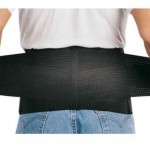Entries tagged with “sick”.
Did you find what you wanted?
Tue 4 Mar 2014
Posted by admin under Asbestos, Asthma, Biological Monitoring, Chemical Exposure, Dermal, Hazard Communication, Hearing Conservation, hygienist, industrial hygienist, Management, Mold, occupational hygiene, Risk, safety, Training, Uncategorized
Comments Off on I’m sick …and I think it’s from my work
Let’s clarify: You are a working adult. You are feeling symptoms (of some sort). And, you think it’s from something your exposed to while at work (in construction). This could include, but will not, the flu-bug. Below is a list of the most common construction illnesses.
Most Common Construction Illnesses:
- Upper respiratory
- could be from silica, drywall, dust, asbestos, nuisance dust, chemicals (I won’t even try to list all of them)
- Skin (dermal, dermatitis) damage –
- From: concrete, abrasion, chemicals
- Eyes
- mostly from things that get into the eye.
- Cumulative trauma (ergonomics) or inflammation
- repetitive motion, over a day hurts, imagine this for years
- Burn (heat or chemicals)
- Usually around hot work like welding, but this can occur when using certian chemicals
- Hearing loss
- cumulative trama to the ears when exposure is above about 85 decibels for any extended period of time.
- Poisoning– General or systemic
- From: poison ivy, stinging needles, dog bites, bees, etc.
This list may vary depending on many things including what type of construction you are in; GC, heavy, civil, specialty, etc. Â I put this list together to get a picture of where we see illnesses. However, as previously mentioned, and, everyone knows, the FOCUS FOUR is really where most injuries occur in construction.
We have seen the most prevention of illness due to one single device:
 the back support. Â ha. just kidding, of course.
the back support. Â ha. just kidding, of course.
Mon 28 Jan 2013
Many times an IH is called upon to determine the cause of a person’s ailing symptoms. For example, an employee might complain of congestion, irritability, bloody nose, etc. Someone has decided it might be from their exposure at work.
The practice of industrial hygiene is difficult to apply to an individual. What I mean is, this field of study was developed due to serious health concerns over a population of people at work. This is essentially how science works, you take a population, study it, find the differences, then make conclusions.
Trouble occurs when you try this backwards. If the same person (as example above) complains of congestion, irritability, bloody nose- can we assume they must have exposure to lead dust? Not usually. We must obtain other clues.
What industrial hygienists try to do in these instances is rule-out the possible over-exposures. Sometimes we can measure for chemical exposures to see if it might be of concern. But even then, it’s not fool proof. Below are a few issues which make it complicated.
- exposure at work? job? extracurricular activities? home?
- person might have autoimmune disease and gets sick easier
- sampling is not feasible
- sampling is somehow screwed up (by IH, lab, mail carrier)
- exposure is through food, clothing, etc.
Even with these fallacies, there are things an individual can do to narrow down their ailments:
- create a log. time, type of symptoms, pain scale, others experience/smell, food eaten
- change things and see if it improves/makes it worse
- research – but do it right. Look at the items you use, check the SDS
 the back support. Â ha. just kidding, of course.
the back support. Â ha. just kidding, of course.